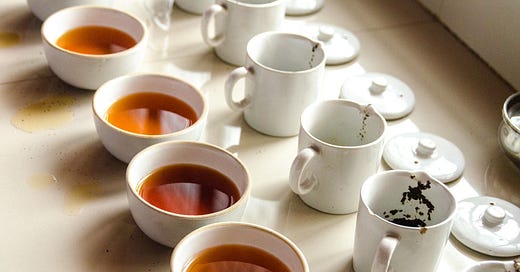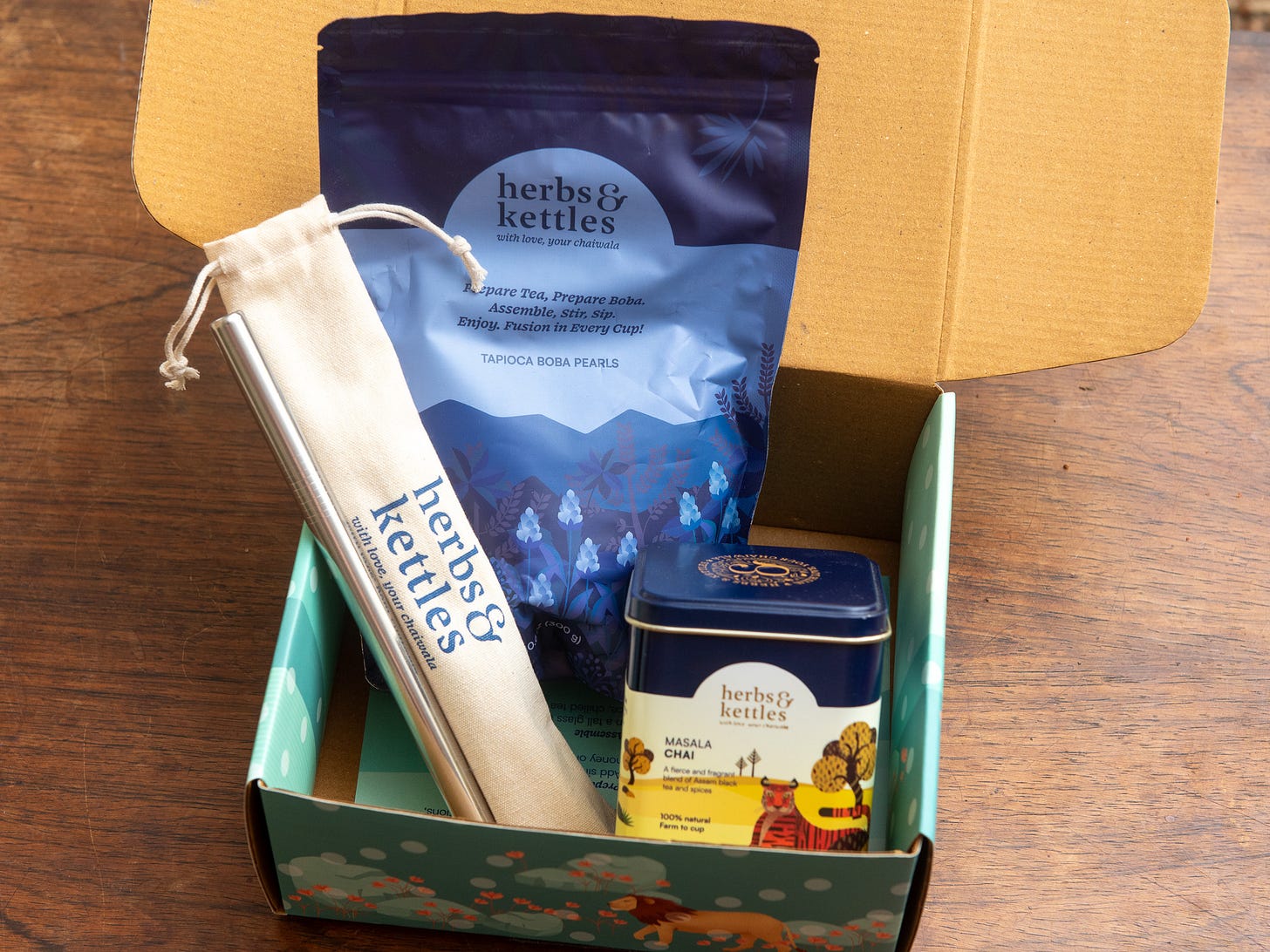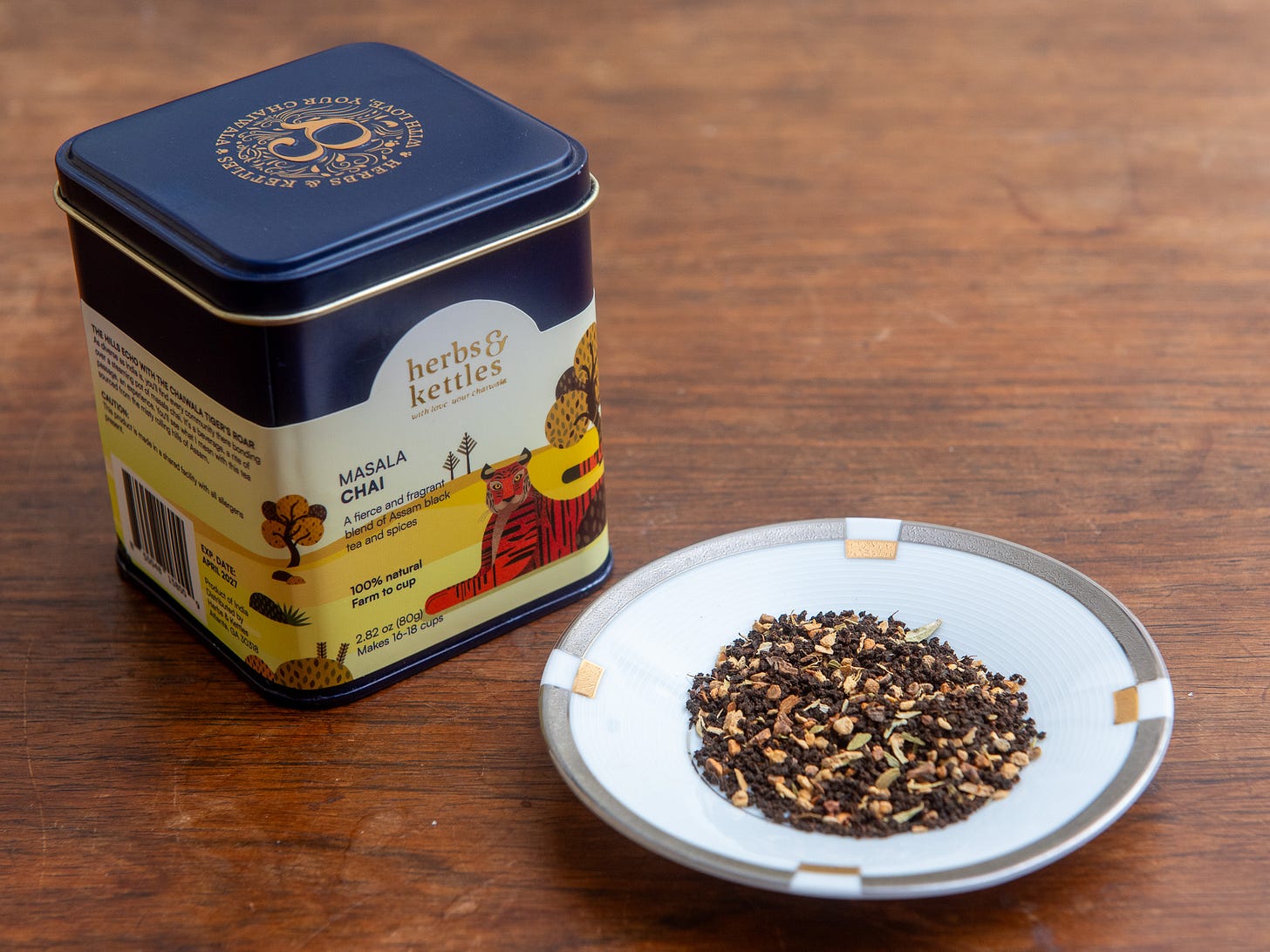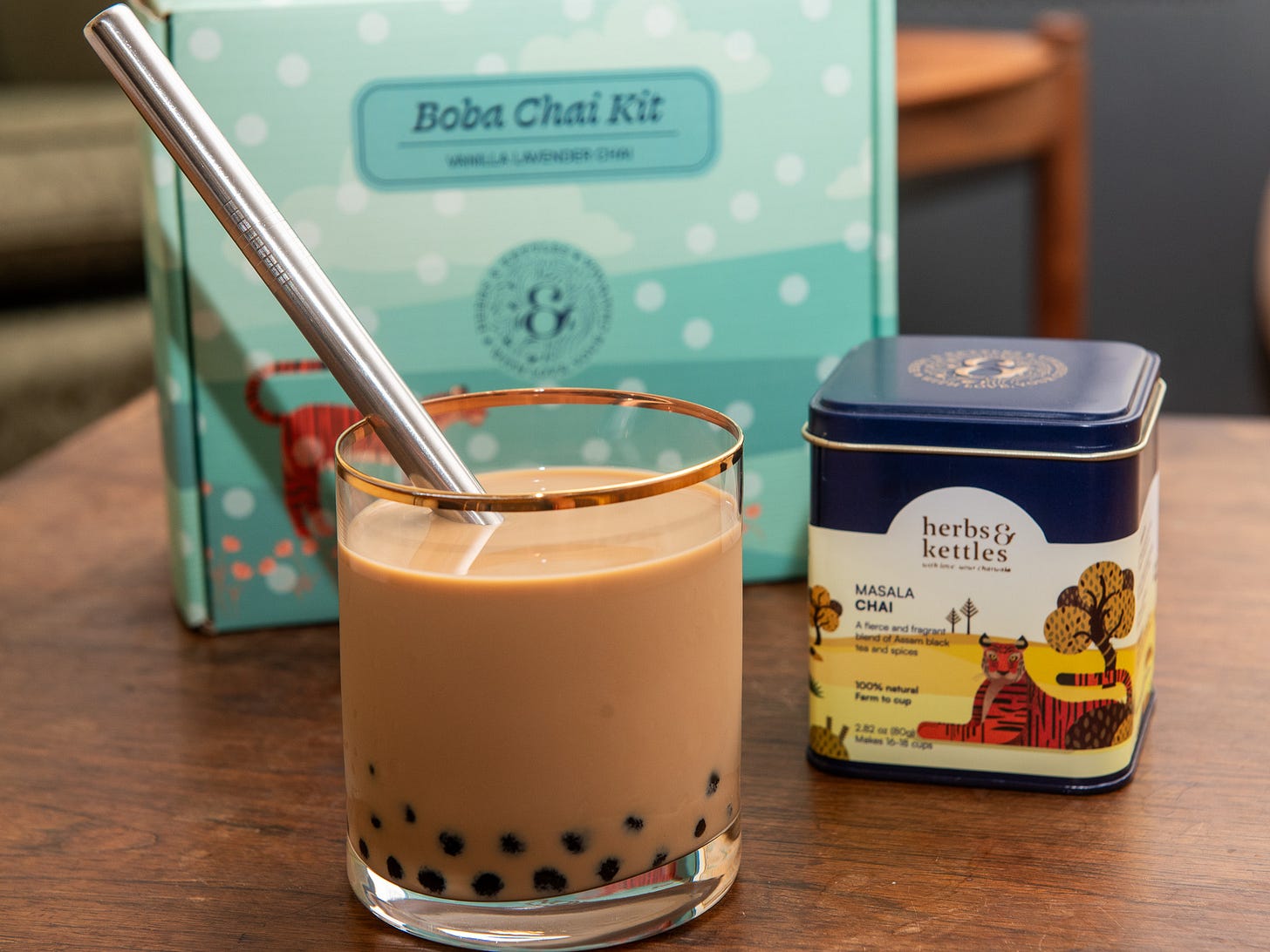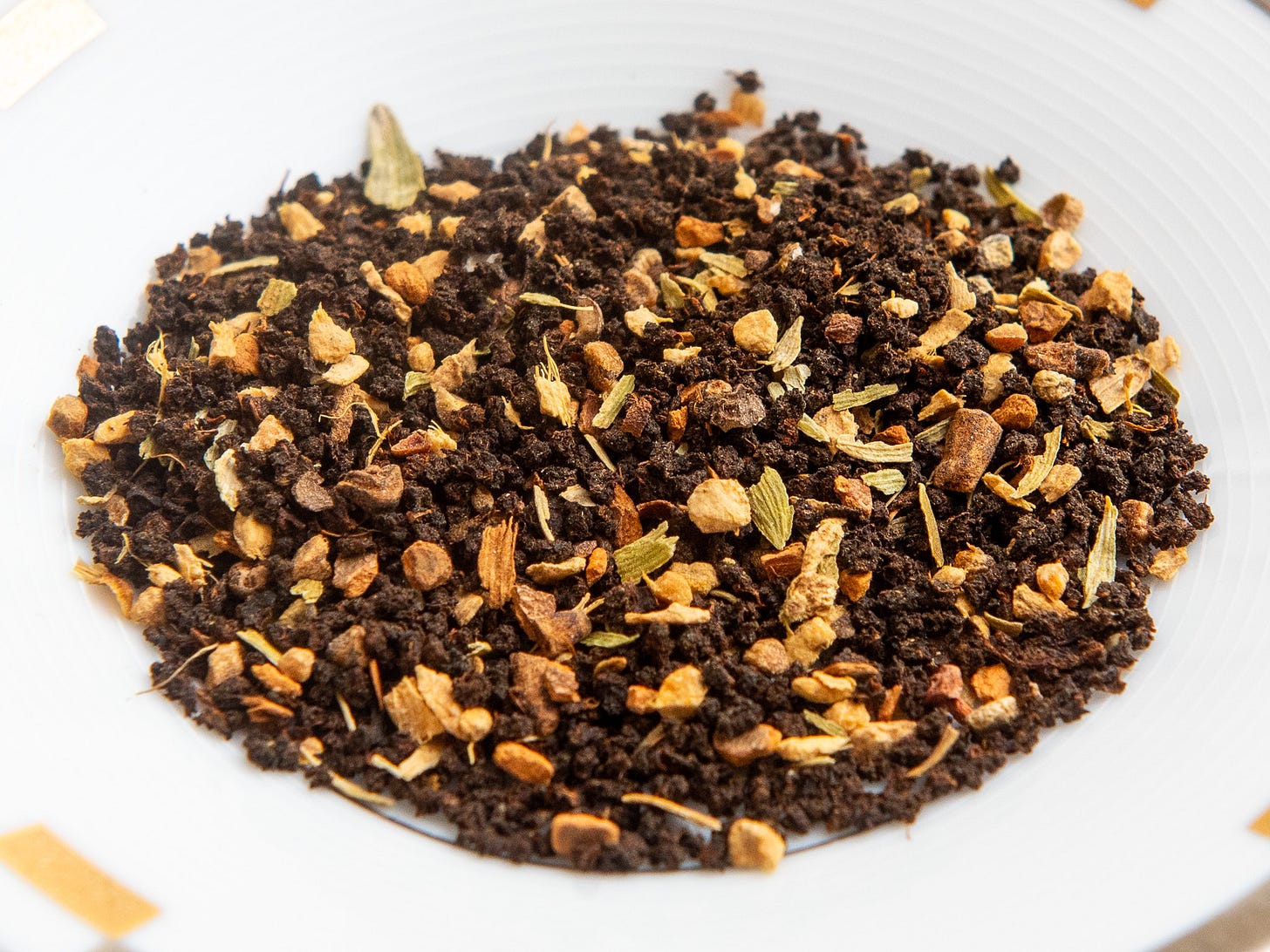The future of tea at Index NYC, July 12th
How are climate change, shifting labor dynamics, and big business affecting our daily cups of tea? We’ll explore all these issues and more on July 12th at Index for an immersive talk and tasting led by yours truly. Tickets are $35 and we’ll be sipping some fun and weird teas from my private stash. I’d love to see you there!
Chai, meet boba
The tea: Masala chai boba kit, sold by Herbs & Kettles. $36 for the kit.
Here are two great tastes that belong together: spicy masala chai and cool, creamy boba tea. I grew up sucking tapioca pearls out of thick straws and am embarrassed to admit I never once considered how well chai would take to the format. But Poorvi and Abe Chordia of Herbs & Kettles did, and now we all benefit. This kit includes 80 grams of their bright and balanced masala chai, dried tapioca pearls, and two metal straws that are wide enough to accommodate the boba’s upward ascension. The concept has just the right amount of camp and would make a neat gift. Long live boba chai.
The source: The last time we talked about Herbs & Kettles it was about their mission to source specialty and indigenous styles of Indian tea that are often overlooked by the Western market. You can dig deeper into those brews by joining their tea club, which showcases the bleeding edge of artisan productions in India. Black teas made from Japanese cultivars, unusual yellow and oolong styles, white teas with perfect plucks—it’s a rewarding subscription with a lot to explore. However the company’s main business comes from chai and herbal blends like the masala chai sold in this kit, and they don’t slouch. I’m impressed by the balance and deep spicing in those chai blends, especially the rose and cardamom version.
To brew: Good boba milk tea begins with a strong, strong brew and often some textural enhancement in the form of non-dairy creamer, half and half, or evaporated milk. Sugar does a lot of heavy lifting, too. I haven’t cracked the code on that style yet, so here’s a lighter homespun version. Combine 1 cup water and 1 cup whole milk with 3 to 4 teaspoons of the masala chai blend. Bring the mix to a boil over medium-high heat, scraping the bottom of the pot with a spatula to keep the milk from sticking. Once it boils, let the mix bubble halfway up the pot, then quickly remove it from the heat until the foam subsides. Repeat this process for 3 to 4 additional boils until the brew has reached your desired color. Then transfer it to a heatproof container—tea, spices, and all—and place in the fridge until cold. Once it’s chilled you can strain the tea and add sugar to taste. A few grains of salt wouldn’t hurt, either.
Boil the boba in simmering water until the pearls are softer than you think they should be, about 6 minutes. They’ll firm up once you rinse them under cold water. You can toss the rinsed pearls with brown sugar or maple syrup for an extra kick of sweetness. They don’t keep well though, so only cook as much boba as you need. How much boba belongs in your tea? I wouldn’t dare to prescribe something so personal.
CTC, the teabag’s best friend
If you’ve ever seen little pellets of black tea like the pieces in today’s masala chai blend, you’ve found a kind of tea called crush, tear, curl, or CTC. Most teabags on the planet are filled with these tiny, torn up leaves, and the style is essential for making a properly strong cup of chai. This is the apex of mass produced commodity leaf, which makes it a tricky topic to talk about.
There’s a fair argument to be made that CTC’s creation “ruined” what we think of as specialty tea culture; CTC production flattens and homogenizes tea on a worldwide scale, transforming a diverse, handmade product into a bland, uniform commodity. But the low cost, high volume tea also opened up new markets that could never afford the whole-leaf stuff, and one could argue equally well that CTC was instrumental in making tea the world’s most popular drink that it is today. What’s more, CTC is an economic lifeline for millions of tea farmers in regions where specialty production is neither feasible nor affordable.
So what are we to make of CTC? Rather than judge this industrial commodity for what it isn’t, let’s consider it on its own terms. What is CTC exactly and how did it become the teabag’s best friend?
Keep reading with a 7-day free trial
Subscribe to Leafhopper to keep reading this post and get 7 days of free access to the full post archives.


